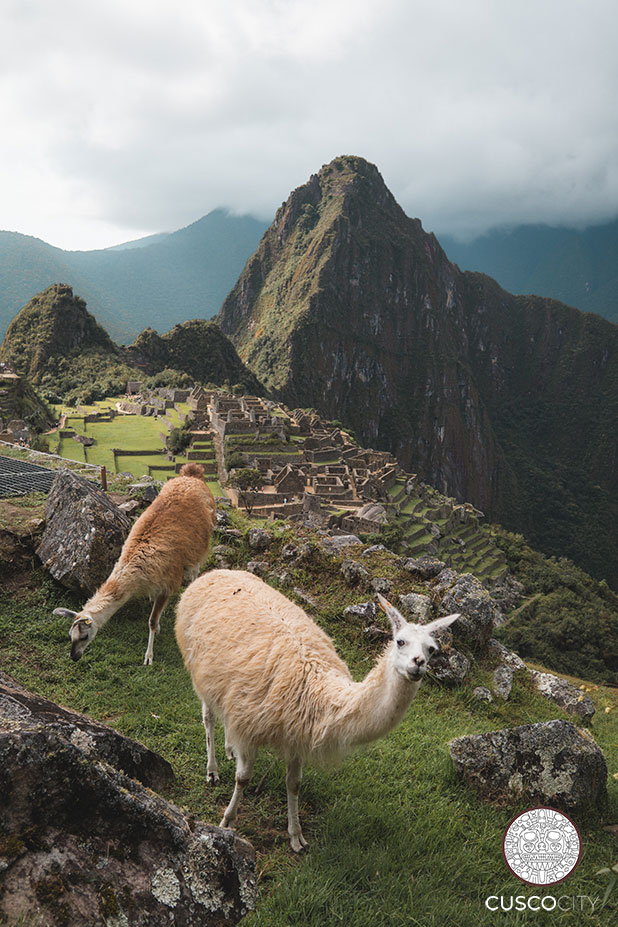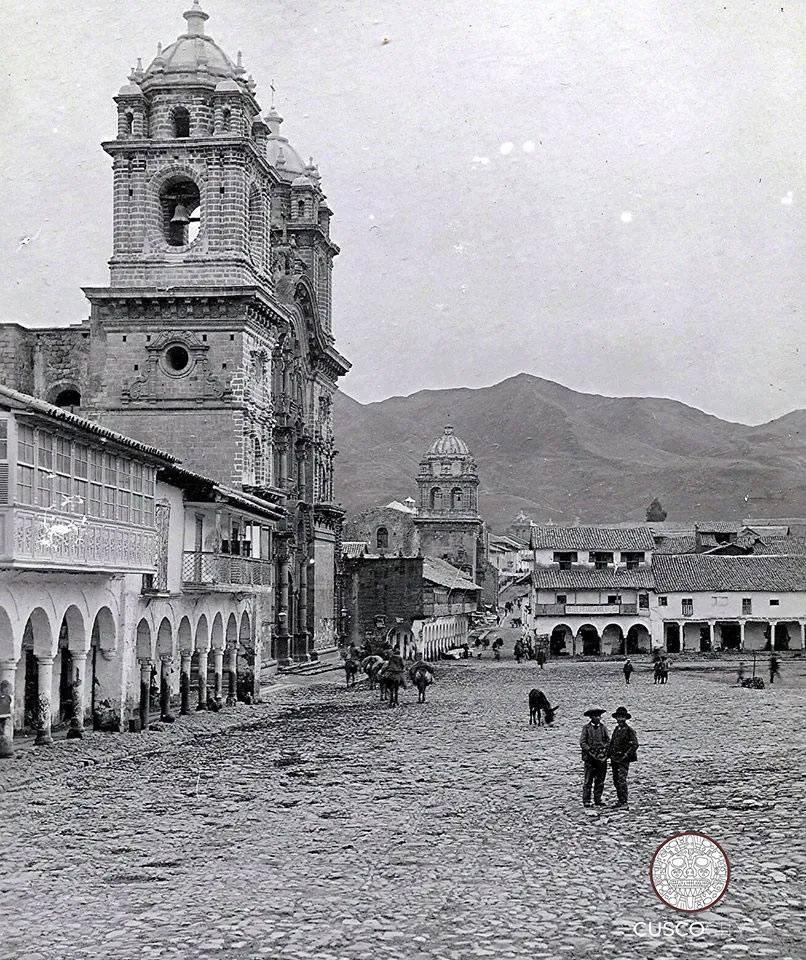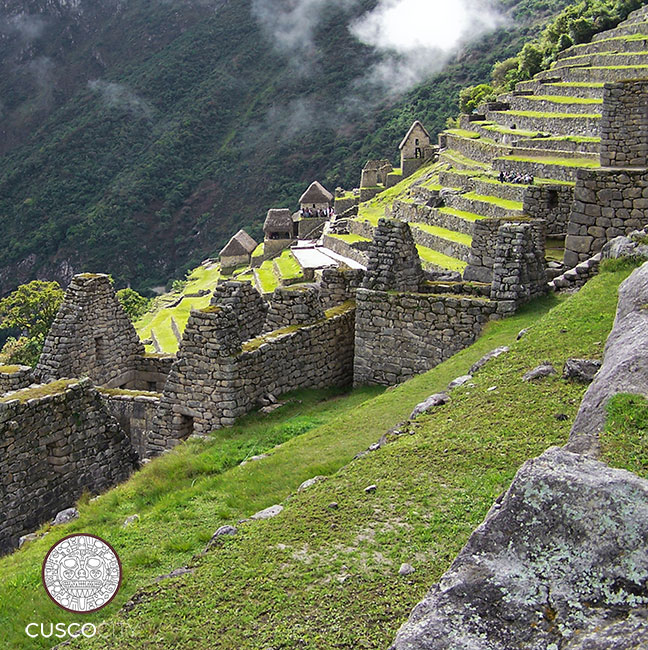Peru is a country in South America that is home to a rich cultural heritage and a diverse landscape. One of its most famous regions is Cusco, which is located in the southeastern part of the country. Cusco is known for its stunning natural beauty, ancient ruins, and vibrant culture. In this article, we will explore the history, attractions, and culture of Cusco, Peru.

History of Cusco
Cusco was once the capital of the Inca Empire, which was one of the most significant and influential civilizations in South America. The Inca Empire was founded in the 13th century and lasted until the Spanish conquest in the 16th century. During this time, the Incas built an extensive network of roads and cities throughout the Andes mountains, including Cusco.
Cusco was the center of the Inca Empire and was considered the most important city in South America. The Incas built magnificent structures and temples in Cusco, including the famous Sacsayhuaman fortress, which still stands today. The city was also home to the famous Inca Trail, a network of roads that connected the Inca Empire to other parts of South America.
When the Spanish arrived in South America in the 16th century, they quickly recognized the importance of Cusco and began to colonize the city. The Spanish destroyed many of the Inca structures and replaced them with their own buildings and churches. Today, Cusco is a unique blend of Inca and Spanish architecture, and the city is recognized as a UNESCO World Heritage Site.
IMPORTANT: Cusco Region? or Cusco City?
The Cusco region and Cusco City are two distinct entities that are often confused by visitors to the area. While Cusco City is the cultural and historical heart of the region, the surrounding area offers its own unique attractions and experiences.
Cusco City is a vibrant and bustling metropolis that is rich in history and culture. Its cobbled streets are lined with colonial architecture, and the city is home to many museums, galleries, and cultural events. Visitors to the city can explore ancient Inca ruins, such as Sacsayhuaman and the Qorikancha Temple, or shop for traditional Andean handicrafts in the San Blas neighborhood.
Beyond the city limits, the Cusco region offers a wealth of natural and cultural attractions. The Sacred Valley, located just outside the city, is home to many Inca ruins, including Machu Picchu, the fortress of Ollantaytambo and the agricultural terraces of Moray. Visitors can also hike the Inca Trail or one of the many alternative treks, such as the Salkantay Trek or the Lares Trek, which offer stunning views of the Andes Mountains and opportunities to interact with local communities.
10 Popular Questions about Peru Cusco

- What is the best time to visit Cusco, Peru?
- How do I get to Machu Picchu from Cusco?
- What are the must-visit attractions in Cusco?
- What is the altitude of Cusco, and how does it affect visitors?
- What is the food like in Cusco, Peru?
- What are the best hikes in the Cusco region?
- How many days should I spend in Cusco, Peru?
- Is it safe to travel to Cusco, Peru?
- What is the currency used in Cusco, Peru?
“Best Time to Visit Cusco, Peru”
Cusco is a beautiful city located in the southeastern part of Peru. The city is known for its stunning natural beauty, ancient ruins, and vibrant culture. However, when planning a trip to Cusco, it’s essential to consider the weather and the best time to visit.
The best time to visit Cusco is during the dry season, which runs from May to October. During this time, the weather is sunny and dry, and there is very little rainfall. The dry season is also the peak tourist season, so it’s essential to book accommodations and tours in advance.
One of the main attractions in Cusco is Machu Picchu, and the best time to visit Machu Picchu is also during the dry season. The dry weather ensures that visitors can enjoy the breathtaking views of Machu Picchu without any hindrances.
However, if you’re looking to avoid the crowds and want to experience the local culture, consider visiting Cusco during the shoulder seasons of April and November. During these months, the weather is still relatively dry, but there are fewer tourists, and prices for accommodations and tours may be lower.
If you’re planning to visit Cusco during the wet season, which runs from November to April, be prepared for frequent rain showers and potentially muddy hiking trails. However, the wet season is also the best time to see the beautiful green landscapes of Cusco and enjoy the lush vegetation. In summary, the best time to visit Cusco is during the dry season from May to October, with peak tourist season in July and August. However, if you’re looking to avoid the crowds and experience the local culture, consider visiting during the shoulder season of April and November.
“Getting to Machu Picchu from Cusco”
Machu Picchu is one of the most famous attractions in Cusco, Peru. It is an ancient Inca city that was built in the 15th century and was abandoned during the Spanish conquest. Today, it is recognized as one of the seven wonders of the world and draws visitors from all over the world. In this article, we’ll explore how to get to Machu Picchu from Cusco.
The most popular way to get to Machu Picchu from Cusco is by taking the train. The train departs from Cusco and takes passengers to the town of Aguas Calientes, which is located at the base of Machu Picchu. The train journey takes around three and a half hours, and the views are stunning.

There are two train companies that operate between Cusco and Aguas Calientes: Peru Rail and Inca Rail. Both companies offer several different train classes, including luxury options with dining cars and panoramic windows. However, prices can be steep, so it’s essential to book in advance.
Another popular way to get to Machu Picchu is by hiking the Inca Trail. The Inca Trail is a 26-mile trail that starts in Cusco and ends at Machu Picchu. The hike takes several days and is considered one of the most beautiful and challenging hikes in the world. Hikers pass through stunning landscapes and ancient Inca ruins before arriving at Machu Picchu.
It’s essential to book the Inca Trail in advance, as permits are required, and there are limits on the number of hikers allowed on the trail each day. The Inca Trail is closed in February for maintenance, so it’s important to plan accordingly.
For those who don’t want to hike the Inca Trail, there are several other trekking options available. The Salkantay Trek and the Lares Trek are popular alternatives to the Inca Trail, offering stunning views and unique cultural experiences.
Once you arrive in Aguas Calientes, there are buses that will take you from the town to the entrance of Machu Picchu. The buses run frequently, and the ride takes around 20 minutes. It’s also possible to hike up to Machu Picchu from Aguas Calientes, although it’s a steep and challenging climb.
In summary, there are several ways to get to Machu Picchu from Cusco, including by train, hiking the Inca Trail or an alternative trek, or taking a bus from Aguas Calientes. Regardless of how you get there, Machu Picchu is a must-see attraction in Cusco, and the journey is well worth it.
“Must-Visit Attractions in Cusco”
Cusco is a beautiful city located in the southeastern part of Peru. The city is known for its stunning natural beauty, ancient ruins, and vibrant culture. In this article, we’ll explore the must-visit attractions in Cusco.
Machu Picchu (Cusco Region)
Machu Picchu is the most famous attraction in Cusco and one of the seven wonders of the world. The ancient Inca city was built in the 15th century and was abandoned during the Spanish conquest. Today, Machu Picchu is recognized as one of the most significant and awe-inspiring archaeological sites in the world.
Sacsayhuaman (Cusco City)
Sacsayhuaman is an Inca fortress that was built in the 15th century. The fortress was built using massive stone blocks that weigh up to 200 tons. The site is located just outside of Cusco and is accessible by bus or taxi.
Cusco Cathedral (Cusco City)
Cusco Cathedral is one of the most beautiful and historic buildings in Cusco. The cathedral was built in the 16th century and is located in the Plaza de Armas, which is the central square of Cusco. The cathedral is home to many priceless works of art, including paintings and sculptures.
San Pedro Market (Cusco City)
San Pedro Market is a bustling market in Cusco that sells everything from fresh produce to souvenirs. The market is located in the center of Cusco and is a popular spot for locals and tourists alike. Visitors can sample traditional Peruvian foods and buy handmade crafts and souvenirs.
Qorikancha (Cusco City)
Qorikancha is an Inca temple that was dedicated to the sun god Inti. The temple was one of the most important religious sites in the Inca Empire, and its walls were once covered in gold. Today, visitors can see the ruins of the temple and learn about its fascinating history.
In addition to these top attractions, there are many other places to visit in Cusco, including the Inca Museum, the Puka Pukara fortress, and the Tambomachay ruins. Cusco is a city rich in history and culture, and there are many opportunities to learn about the city’s fascinating past and experience its vibrant present.
“Altitude of Cusco City, Peru and its Effects on Visitors”
Cusco City is located in the Andes mountains and is situated at an altitude of 11,152 feet (3,399 meters) above sea level. The altitude of Cusco City can have a significant impact on visitors, and it’s important to be aware of the effects and take precautions to stay healthy while visiting.
One of the most common effects of the altitude is altitude sickness, also known as acute mountain sickness (AMS). AMS can cause symptoms such as headaches, nausea, fatigue, and shortness of breath. It’s important to acclimate to the altitude slowly and stay hydrated to reduce the risk of AMS.

To acclimate to the altitude, it’s recommended to spend a few days in Cusco City before attempting any strenuous activities. Visitors should also avoid drinking alcohol and smoking, as these activities can make AMS symptoms worse. Drinking plenty of water and consuming foods high in carbohydrates can also help reduce the risk of AMS.
In addition to AMS, the altitude of Cusco City can also have an impact on physical activities. Visitors may find that they tire more easily and have difficulty with activities such as hiking and climbing stairs. It’s important to take breaks and listen to your body to avoid overexertion.
Despite the challenges of the altitude, many visitors to Cusco City find that the experience is well worth it. The city’s stunning natural beauty and rich cultural heritage make it a must-see destination for many travelers. By taking precautions and acclimating slowly, visitors can enjoy all that Cusco region has to offer.
“Food in Cusco, Peru”
Peruvian cuisine is known for its unique blend of indigenous and European influences, and Cusco City is no exception. The city is home to a wide variety of delicious dishes and culinary traditions that reflect its rich cultural heritage.
One of the most famous dishes in Cusco City is cuy, or guinea pig. While this may sound unusual to visitors, cuy has been a staple of Peruvian cuisine for thousands of years. The dish is typically served roasted and is considered a delicacy in the region.
Another popular dish in Cusco City is ceviche, a dish made with raw fish marinated in citrus juice and spices. Ceviche is a refreshing and flavorful dish that is perfect for a hot day in Cusco City.
Chicha is a traditional Peruvian drink made from fermented corn. In Cusco City, chicha is often served in large clay pots and is a popular drink during festivals and celebrations.
Other popular dishes in Cusco City include lomo saltado, a stir-fry made with beef, onions, and tomatoes, and rocoto relleno, a spicy stuffed pepper dish.
In addition to traditional Peruvian cuisine, Cusco City also offers many international dining options. Visitors can find everything from Italian and French cuisine to sushi and vegetarian restaurants.
No visit to Cusco City is complete without trying some of the city’s delicious cuisine. With its unique blend of flavors and cultural influences, Cusco is a food lover’s paradise.
“Best Hikes in the Cusco Region”
Cusco region is a beautiful city located in the southeastern part of Peru. The city is known for its stunning natural beauty, ancient ruins, and vibrant culture. One of the best ways to experience the natural beauty of Cusco region is by taking a hike. In this article, we’ll explore the best hikes in the Cusco region.
Inca Trail

The Inca Trail is the most famous hike in the Cusco region, and one of the most beautiful and challenging hikes in the world. The trail is a 26-mile trek that takes hikers through stunning landscapes, ancient Inca ruins, and high mountain passes before arriving at Machu Picchu. Hikers need to obtain permits in advance and are required to hike with a licensed guide.
Salkantay Trek
The Salkantay Trek is an alternative to the Inca Trail and is a popular choice for those looking for a challenging hike with stunning views. The trek takes hikers through the snow-capped peaks of the Andes and past glacial lakes and waterfalls. The Salkantay Trek is typically a five-day hike and ends at Machu Picchu.
Lares Trek
The Lares Trek is another alternative to the Inca Trail and is a great option for those looking to experience the local culture. The trek takes hikers through traditional Andean villages, where they can meet locals and learn about their way of life. The Lares Trek also includes stunning views of the Andes and ends at Machu Picchu.
Ausangate Trek
The Ausangate Trek is a challenging hike that takes hikers through the stunning landscapes of the Vilcanota mountain range. The trek includes views of snow-capped peaks, glacial lakes, and hot springs. The Ausangate Trek is typically a six-day hike and is a great option for those looking for a more remote and less crowded hiking experience.
Rainbow Mountain Trek
The Rainbow Mountain Trek is a day hike that takes hikers to one of the most beautiful and colorful natural wonders in the Cusco region. The Rainbow Mountain, or Vinicunca, is a stunning geological formation that features colorful layers of rock and mineral deposits. The hike to Rainbow Mountain is challenging, but the views are well worth the effort. In summary, the Cusco region offers some of the most beautiful and challenging hikes in the world. From the famous Inca Trail to alternative treks like Salkantay and Lares, there is a hike for every level of adventurer. Whether you’re looking to experience the local culture, see stunning landscapes, or challenge yourself physically, the Cusco region has something to offer.
“How Many Days to Spend in Cusco, Peru”
Cusco City is a beautiful city located in the southeastern part of Peru. The city is known for its stunning natural beauty, ancient ruins, and vibrant culture. When planning a trip to Cusco City, one of the most common questions is how many days to spend in the city. In this article, we’ll explore the optimal amount of time to spend in Cusco region.
Most visitors to Cusco City spend three to four days in the city. This allows for enough time to explore the city’s top attractions, such as Machu Picchu, Sacsayhuaman, and the Cusco Cathedral. It also allows time for acclimatization to the altitude and for some relaxation in between activities.
For those looking to experience more of the region, it’s recommended to spend at least a week in Cusco region. This allows time for additional hikes or treks, such as the Inca Trail or the Salkantay Trek, and for exploring more of the local culture and cuisine. A week in Cusco region also allows time for day trips to nearby attractions, such as the Sacred Valley and Pisac.
For those with more time to spare, spending two weeks or more in Cusco region is a great way to truly immerse oneself in the local culture and experience all that the region has to offer. This allows for more time to explore the city’s lesser-known attractions, participate in cultural events and festivals, and take additional hikes or treks.
Ultimately, the amount of time to spend in Cusco depends on one’s individual interests and priorities. However, regardless of how much time is spent in the city, visitors are sure to be captivated by its stunning natural beauty and rich cultural heritage.
“The History of Cusco, Peru”
Cusco City is a city with a rich and fascinating history that dates back thousands of years. The city was once the capital of the Inca Empire, and its ruins and ancient structures are a testament to the civilization’s advanced engineering and architectural skills.

The Inca Empire was one of the largest and most advanced civilizations in the world at the time of its peak. The empire spanned from present-day Ecuador to Chile and was characterized by its complex social hierarchy, advanced agricultural practices, and impressive engineering feats.
Cusco City was the capital of the Inca Empire and served as the administrative and religious center of the civilization. The city was designed to reflect the Inca’s connection to nature and featured impressive structures such as the Temple of the Sun and the Temple of the Moon.
In 1533, the Spanish arrived in Cusco and conquered the city, effectively ending the Inca Empire. The Spanish then built their own structures on top of the Inca ruins, creating a unique blend of indigenous and European architecture.
Today, Cusco City is a city that celebrates its rich history and cultural heritage. Visitors can explore ancient Inca ruins, visit museums that showcase the city’s history, and experience traditional Andean culture firsthand.
In summary, Cusco City has a rich and fascinating history that dates back thousands of years. As the former capital of the Inca Empire, the city played an essential role in the civilization’s development and was the center of the Inca’s impressive engineering and architectural feats. The city’s history is celebrated today through its many attractions and cultural traditions.
“Best Time to Visit Cusco, Peru”
Cusco City is a city located in the southeastern part of Peru and is known for its stunning natural beauty, ancient ruins, and vibrant culture. When planning a trip to Cusco, one of the most important factors to consider is the best time to visit. In this article, we’ll explore the best time to visit Cusco, Peru.
The best time to visit Cusco is during the dry season, which runs from May to September. During this time, the weather is mild, and there is little rainfall, making it an ideal time for outdoor activities such as hiking and exploring the city’s ruins. The dry season is also the busiest time of year for tourism, so visitors should expect larger crowds and higher prices.

The wet season in Cusco runs from October to April and is characterized by heavy rainfall and high humidity. While the wet season can be a less popular time to visit due to the weather, it’s also a great time to experience the city’s lush green landscapes and see the region’s waterfalls and rivers at their peak.
It’s important to note that Cusco’s high altitude can have an impact on the weather, and visitors should be prepared for sudden changes in temperature and weather conditions. It’s recommended to bring warm layers and waterproof gear, regardless of the time of year.
In addition to the weather, visitors should also consider the city’s many festivals and events when planning their trip. Cusco City celebrates several festivals throughout the year, including Inti Raymi, which takes place in June and is a celebration of the winter solstice, and the Qoyllur Rit’i pilgrimage, which takes place in May and is a celebration of the mountain gods.
In summary, the best time to visit Cusco is during the dry season, which runs from May to September.
This time of year offers mild weather and little rainfall, making it an ideal time for outdoor activities and exploring the city’s ruins. However, visitors should also be prepared for larger crowds and higher prices. The wet season, which runs from October to April, can also be a great time to visit for those who want to experience the city’s lush green landscapes and see its waterfalls and rivers at their peak. Regardless of when visitors choose to visit, they should be prepared for sudden changes in weather due to Cusco’s high altitude. It’s also important to consider the city’s festivals and events when planning a trip, as they offer unique opportunities to experience the local culture and traditions.
In conclusion, Cusco City that offers something for every traveler, from its stunning natural beauty and ancient ruins to its vibrant culture and delicious cuisine. By taking the time to explore its many attractions and immersing oneself in its rich history and traditions, visitors can experience the magic of Cusco for themselves.
